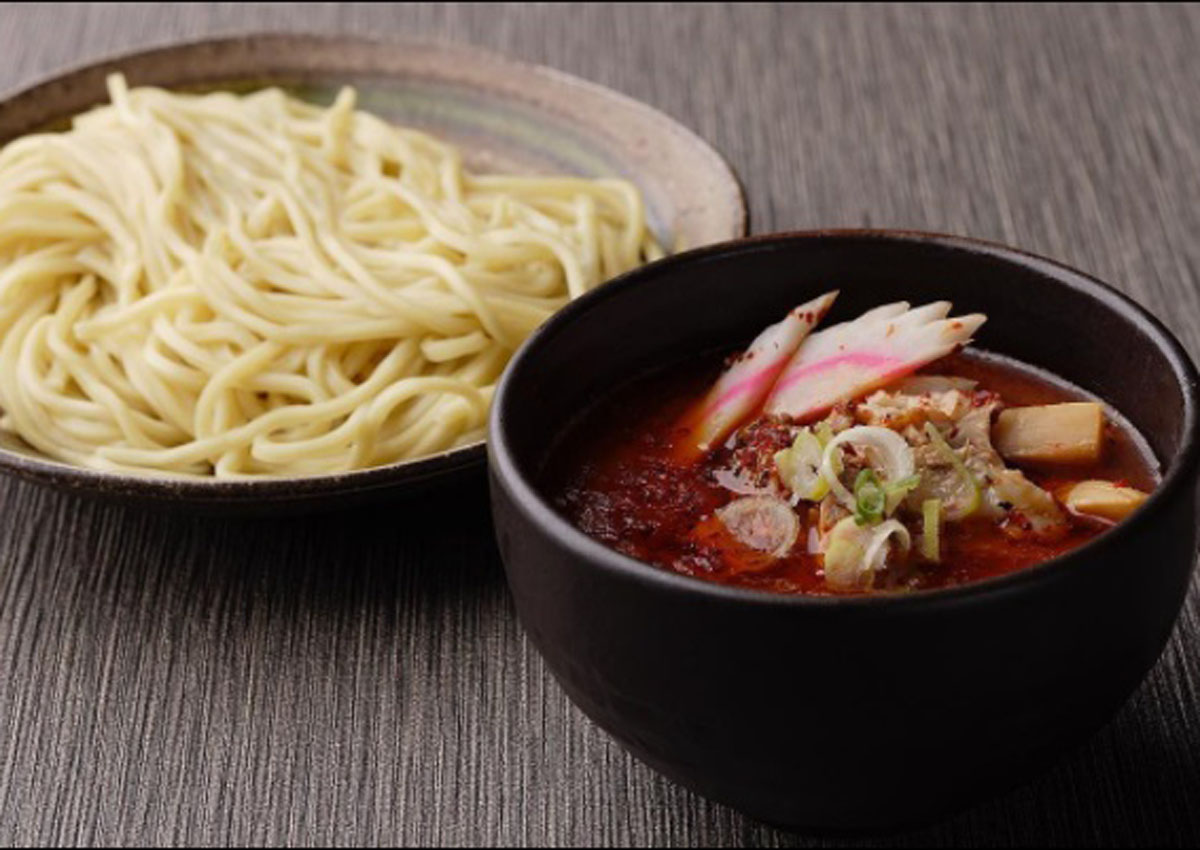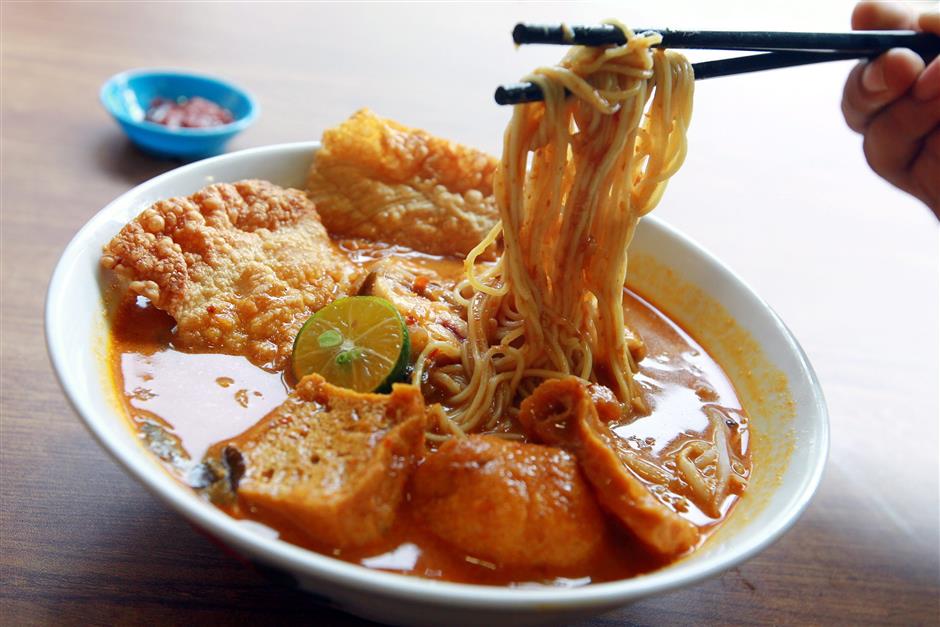Why would anyone want to eat cold ramen?

Ramen, reimagined – because there’s more than one way to slurp a bowl of noodles.
Tsukemen, a cousin of the ubiquitous soupy noodles, has expanded our Japanese noodle horizons in recent years.
Instead of noodles languishing in a rich, steaming broth, this ramen variant has them served with dipping sauces and condiments on the side.
Tsukemen was invented in 1961 by Kazuo Yamagishi, a Tokyo restaurateur.
The Nagano Prefecture native did his apprenticeship at a ramen restaurant in Tokyo – and had the tsukemen lightbulb moment when he was just 17, inspired by the sight of a colleague slurping up noodles which had first been dipped in soup.
Years later, when he had opened his own ramen restaurant Taisho-ken, he added a “special morisoba” to the menu – the cold soba noodles with a dipping soup were a hit, and they spawned tsukemen as a popular sub-genre of ramen.
Whereas ramen is usually piping hot comfort food – eaten in Japan all year round, but particularly sought out in winter – tsukemen has a lighter vibe, still flavour-rich but nicely-suited to summer months, and tropical weather.
They come in separate bowls; the dipping sauce is served hot, the noodles themselves are cold.
The dish popped up on the gastro-radars of ramen-craving Klang Valley-ites a few years ago, showing up on the menus of ramen stalwarts Ippudo and Menya Musashi, and finding a speciality home at the now-defunct Ieyasu Tsukemen & Izakaya at Avenue K.
But with the recent opening of Mitsuyado Seimen at The Starling Mall in Damansara Utama, ramen’s kissing cousin is back with a new lease of life.
Japan’s foremost tsukemen speciality chain, Mitsuyado Seimen began life in 1997.
“What Ippudo is to tonkotsu ramen (in pork bone broth), Mitsuyado is to tsukemen,” said Mitsuyado founder Kiyohiko Nakamura, in town for the outlet’s official opening.
The brand now has 18 branches across Japan and three branches in the Philippines; the Malaysian outlet, its decor suspended a funky take on Zen, will be overseen by head chef Onodera Shigeaki, from Mitsuyado’s Tokyo outlets.
Reminiscent of its main offering – a riff on tradition – Mitsuyado’s interior pays homage to tradition while seguing into the modern, with a carved wooden wall invoking a Zen garden and a bamboo chandelier harking back to the bamboo forests around Japanese villages.
Many ingredients at Mitsuyado are imported from Japan, such as the yuzu and spicy oils, and the special sauces which combine with house-made broth to ultimately turn into the final dipping sauces.
But foremost among the imports is the wheat flour from Hokkaido.
“With other kinds of ramen, the focus is the broth. But with tsukemen, it is the noodles that are the most important,” said Nakamura.
“So we use high quality flour from Hokkaido for our noodles, which are made fresh daily.”
Mitsuyado’s noodles are thicker than most, with a delicate but pronounced chewiness.
This is particularly so when they’re served cold, as with the original tsukemen; the Malaysian outlet also serves them hot on request.
“But it is better cold,” said Nakamura. “The cold noodles meeting the hot broth help to ensure that they remain extra chewy.”
The dipping sauces are intensely flavoured, and though not overly thick, they coat the noodles nicely.
Because they’re so concentrated, they shouldn’t be drunk like soup.
“Diners would find them too salty,” said Nakamura.
So once you are done with noodle dipping, turn to the handy flask of dashi broth that sits on each table – waiting to turn your dipping sauce into a broth, diluted to your preference.
Mitsuyado serves four dipping sauces – its signature is a concentrated, wonderfully flavourful pork concoction liberally spiked with yuzu oil, with chunks of tender pork, bamboo shoots and a mound of shaved daikon.
The distinctive fresh citrus zing of yuzu works exceptionally well to add balance, lift and a hint of tang to the sauce.
To buck tradition just that bit more – which is how new traditions are created, after all – have a little cheese with your tsukemen. Yes, you read that right.
Choose from cheddar sauce or a combination of parmesan and cheddar; this creamy sauce is a bit like nacho cheese sauce, but more natural-tasting.
You mix it in with your noodles first, then dip them in the signature dipping sauce.
There is also a sesame-spiked sauce, chicken soup base and a gently spicy pork-based sauce.
Cheese Tsukemen is RM29.90 (S$10) for a regular, RM31.90 for a large portion; Tan Tan Sesame Tsukumen is RM27.90 for regular and RM29.90 for the large; spicy, or Karashi Tsukemen is RM26.90 for a regular or RM28.90 for the large.
For those who want to stick to ramen tradition, tonkotsu and torigara (in chicken stock) ramen choices are also available.
And on the side?
Roast pork slices, delicate gyoza with a filling of minced pork that is just nicely balanced between the fat and the lean, and juicy karaage chicken which needs nothing more than a judicious squeeze of lemon.
Published at Sun, 23 Jul 2017 02:15:00 +0000




